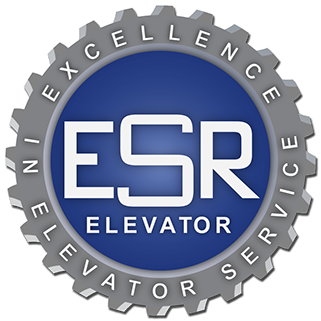Annual state inspections will often require testing of your elevator, and the requirement to provide documentation of successful testing to the state. ESR provides a full range of elevator testing services, from Group II (5 year) and Group III (annual) required load tests for hydraulic elevators, to full load, full speed safety tests (5 year) for traction elevators. The testing will largely depend on the date the job was originally sold, and not, contrary to popular opinion, the date of installation. Group II hydraulic elevators are required to have 5 year load tests, while Group III and IV hydraulic elevators are required to have annual load tests (commonly referred to as Group III testing), among other requirements.
Your elevator should have a tag on the disconnect switch that specifies which Group of code the elevator was installed to, and any subsequent alterations should be listed here as well. This allows the Elevator Inspector to quickly ascertain how the different code sections will apply to the elevator he or she is inspecting. Electric elevators (roped traction) that fall into the Group III or Group IV categories are required to have their car and counterweight safeties tested annually with no load at low speed; while at the 5 year interval the safeties are required to have a full load full speed test. The state may refer to these testing requirements as “Category 1”, or “Category 5” testing, which simply refers to the annual or 5 year required testing interval.
Fire service testing is usually required monthly, and is covered under our maintenance agreements. Fire service operation was a retroactive requirement introduced in the 1970’s so that any elevator installed prior to October 6, 1975 was required to be retrofitted to meet the fire service operation requirements by October 6, 1978. Since this was a complex undertaking, requiring the addition of new, and changes to existing circuitry, many questions arose over the 3 year compliance period. These questions were addressed by the authorities through a series of circular letters and interpretations. Due to this evolving process of understanding the code and the ensuing interpretation process, there are many different subtle variations of fire service operation in operation today. It takes a seasoned professional to determine if the operation actually meets the code in effect for the particular installation.
Many buildings opt to have their own personnel perform the elevator fire service testing. The basic requirements for fire service operation are fairly straight forward, but as mentioned above, a true assessment of the operation will only be attained by a thorough knowledge of the governing code.
